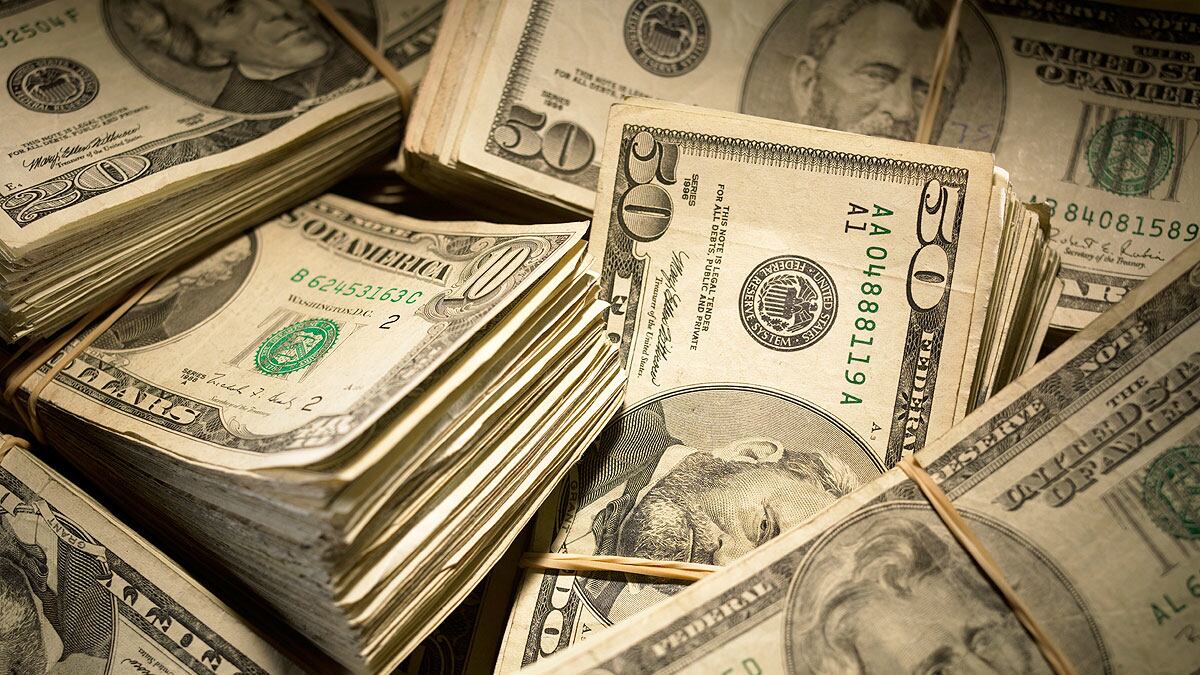It’s an article of faith on the right that Dodd-Frank, the set of financial reforms passed in the wake of the financial crisis, is economic poison. “Dodd-Frank Financial Regulations Strangling Economy,” the Heritage Foundation warned last summer. The libertarian Mercatus Center in January warned of Ten Ways Dodd-Frank will hurt the economy in 2013. Here’s Eric Cantor, in a March Bloomberg television appearance “Dodd-Frank, I believe, and the follow on regulations, present a real problem and threaten our competitiveness if we don’t try to set aside some of the very damaging suggestions about regulation.”

Yes, those Dodd-Frank regulations are really hurting America’s financial institutions. They’re just killing the banking sector. Why, it’s gotten so bad that the banking sector had its best quarter ever in the first quarter of 2013. In its quarterly profile, the Federal Deposit Insurance Corporation reported Wednesday that the 7,019 banks in its system earned a collective $40.3 billion in the first quarter of 2013, or roughly $447 million a day. Virtually every metric was up. Deposits rose, the amount of problem loans fell, and failures were way down. “The proportion of banks that were unprofitable fell to 8.4 percent from 10.6 percent a year earlier,” the FDIC reported. Had Romney won election, you’d hear right-wing econo-pundits boasting about a new golden age for American capitalism.
How can it be that banks are killing it in the face of the horrific Dodd-Frank regulations and the second term of President Obama? The reality, of course, is that regulations often tend to matter only on the margins. Regardless of what the lobbyists and the hacks say, much more powerful forces are at work. In a nutshell, the banks are doing well thanks to government policy and the continuing, much-maligned, never-good-enough expansion, which is about to enter its 47th month.
Nearly five years after the meltdown, the financial system continues to benefit from the extraordinary efforts government has made to support the financial system. Yes, the TARP funds have largely been paid back, and many of the emergency insurance and guarantee efforts have ended. But the Federal Reserve is still providing money to the banking sector essentially for free, and is propping up the economy and helping to keep interest rates low with its aggressive program of purchasing bonds and mortgage-backed securities. Meanwhile, Fannie Mae and Freddie Mac, the government-owned giants that are now profitable, continue to be supported by the government.
The taxpayers have been supporting the value of the hundreds of billions of securities issued by those companies on their books. The taxpayers’ heroic assumption of Fannie and Freddie’s liabilities is one of the unsung and often overlooked keys to the banking system’s recovery.
But the most potent force helping banks is the continued improvement in the economy—some of it attributable to the Federal Reserve, but most of it attributable to the fact that the private sector, with little help from the public sector, is plowing along. Two million more people are at work today than a year before. The housing market is recovering. The stock market is near a record high. America rocks!
More broadly, there has been a huge decline in the rate of failure across the board. Fewer people are losing their jobs. Unemployment claims are trending down, and the number of mass layoff events is declining. Because they have changed their habits and repaired their balance sheets, American consumers and businesses are doing a much, much better job keeping up with financial obligations. We’ve been through this before, but it bears repeating. Aside from student debt, the delinquency rates on every type of debt—corporate, mortgages, credit cards—have been falling steadily. In the first quarter of 2013, bankruptcy filings were off 14 percent from the first quarter of 2012.
And that is what really helps the banks. Banks are the biggest victims of financial failure, since they are leveraged bets on financial success. If you have $10 in cash and make $100 in loans, it doesn’t take much in the way of losses to wipe out all your capital. But when things are going well, it’s really good to be a bank. When more people are working and more economic activity takes place, deposits rise and the demand for loans rises. When more people and companies stay current on their loans, banks collect more interest payments, and they have to set aside less cash to prepare for future bad debts.
It all adds up to big profits. And it’s all happening now, as the full FDIC report shows. The system’s total assets were up a decent 3.6 percent in the first quarter of 2013 from last year. Insured banks charged off $16 billion in the first quarter as uncollectible, down 27 percent from a year ago; the amount of loans that were 90 days or more past due fell by 5.7 percent to $15.7 billion. Banks had to set aside just $11 billion to account for loan losses, “the lowest quarterly low provision since first quarter 2007.”
Of course the decline of failure is most evident in the banks themselves. More than 90 percent of banks are profitable. The number of banks on the FDIC’s “problem list,” i.e., that may be in danger of failing one day, fell to 612 in the first quarter of 2013 from 651 in the fourth quarter of 2012, and is down from 888 two years ago. So far this year, only 13 banks have failed, down from 24 in the first five months of 2012. As a result, the FDIC’s deposit fund, the vehicle through which the banking system insures itself against its own members’ stupidity, is paying out very little to account for losses. As it continues to collect insurance premiums—including higher ones imposed postcrisis on the largest banks—the deposit fund swelled in the first quarter to $35.7 billion.
It may not quite be a wonderful life for bankers. But it’s pretty close—even with Dodd-Frank.





